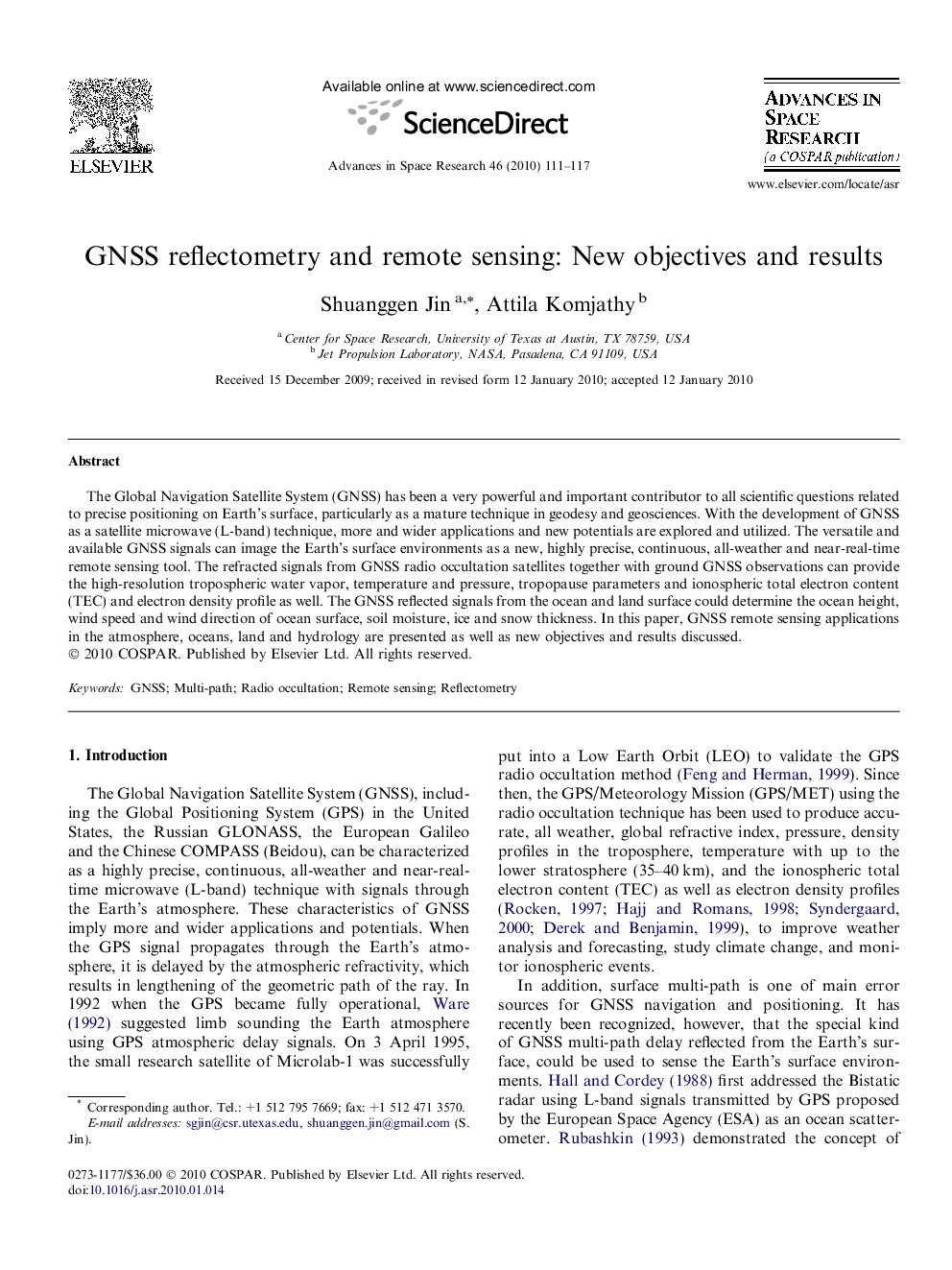| Article ID | Journal | Published Year | Pages | File Type |
|---|---|---|---|---|
| 1766360 | Advances in Space Research | 2010 | 7 Pages |
The Global Navigation Satellite System (GNSS) has been a very powerful and important contributor to all scientific questions related to precise positioning on Earth’s surface, particularly as a mature technique in geodesy and geosciences. With the development of GNSS as a satellite microwave (L-band) technique, more and wider applications and new potentials are explored and utilized. The versatile and available GNSS signals can image the Earth’s surface environments as a new, highly precise, continuous, all-weather and near-real-time remote sensing tool. The refracted signals from GNSS radio occultation satellites together with ground GNSS observations can provide the high-resolution tropospheric water vapor, temperature and pressure, tropopause parameters and ionospheric total electron content (TEC) and electron density profile as well. The GNSS reflected signals from the ocean and land surface could determine the ocean height, wind speed and wind direction of ocean surface, soil moisture, ice and snow thickness. In this paper, GNSS remote sensing applications in the atmosphere, oceans, land and hydrology are presented as well as new objectives and results discussed.
